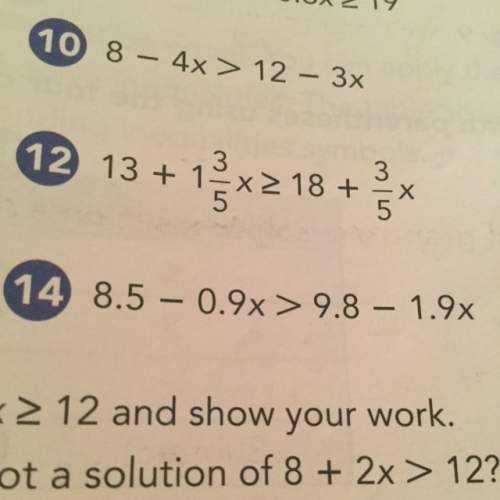
Mathematics, 08.10.2019 04:30 linaaaaa7
Consider the game of independently throwing three fair six-sided dice. there are six combi- nations in which the three resulting numbers can sum up to 9, and also six combinations in which they can sum up to 10: 9 = 1 + 2 + 6 =1+3+5 = 1+4+4 = 2+ 3+ 4 = 2+2 +5 = 3+3+3 10 = 1+3+ 6 = 1+ 4+ 5 = 2+2+6 = 2+3+5 = 2 + 4 + 4 = 3+3+4 this seems to suggest that the chances of throwing 9 and 10 should be equal. yet, a certain gambler in florence in the early xvii century (most likely, the grand duke of tuscany cosimo ii de medici) noticed that in practice it is more likely to throw 10 than 9. show that the probability to get a total of 10 is, in fact, larger than the probability to get a total of 9. (this problem was solved for the duke by galileo galilei.)

Answers: 2


Another question on Mathematics

Mathematics, 21.06.2019 19:30
Factor the polynomial 4x4 – 20x2 – 3x2 + 15 by grouping. what is the resulting expression? (4x2 + 3)(x2 – 5) (4x2 – 3)(x2 – 5) (4x2 – 5)(x2 + 3) (4x2 + 5)(x2 – 3)
Answers: 1


Mathematics, 22.06.2019 04:30
Which of the following is the correct solution to the linear inequality shown below? y< 1/2x-4
Answers: 2

Mathematics, 22.06.2019 05:50
Use the real number line shown below to complete the statement
Answers: 1
You know the right answer?
Consider the game of independently throwing three fair six-sided dice. there are six combi- nations...
Questions

Mathematics, 02.11.2020 02:30

Biology, 02.11.2020 02:30

English, 02.11.2020 02:30



Mathematics, 02.11.2020 02:30

Mathematics, 02.11.2020 02:30


Mathematics, 02.11.2020 02:30

Mathematics, 02.11.2020 02:30




Chemistry, 02.11.2020 02:30

Advanced Placement (AP), 02.11.2020 02:30

English, 02.11.2020 02:30



Spanish, 02.11.2020 02:30





